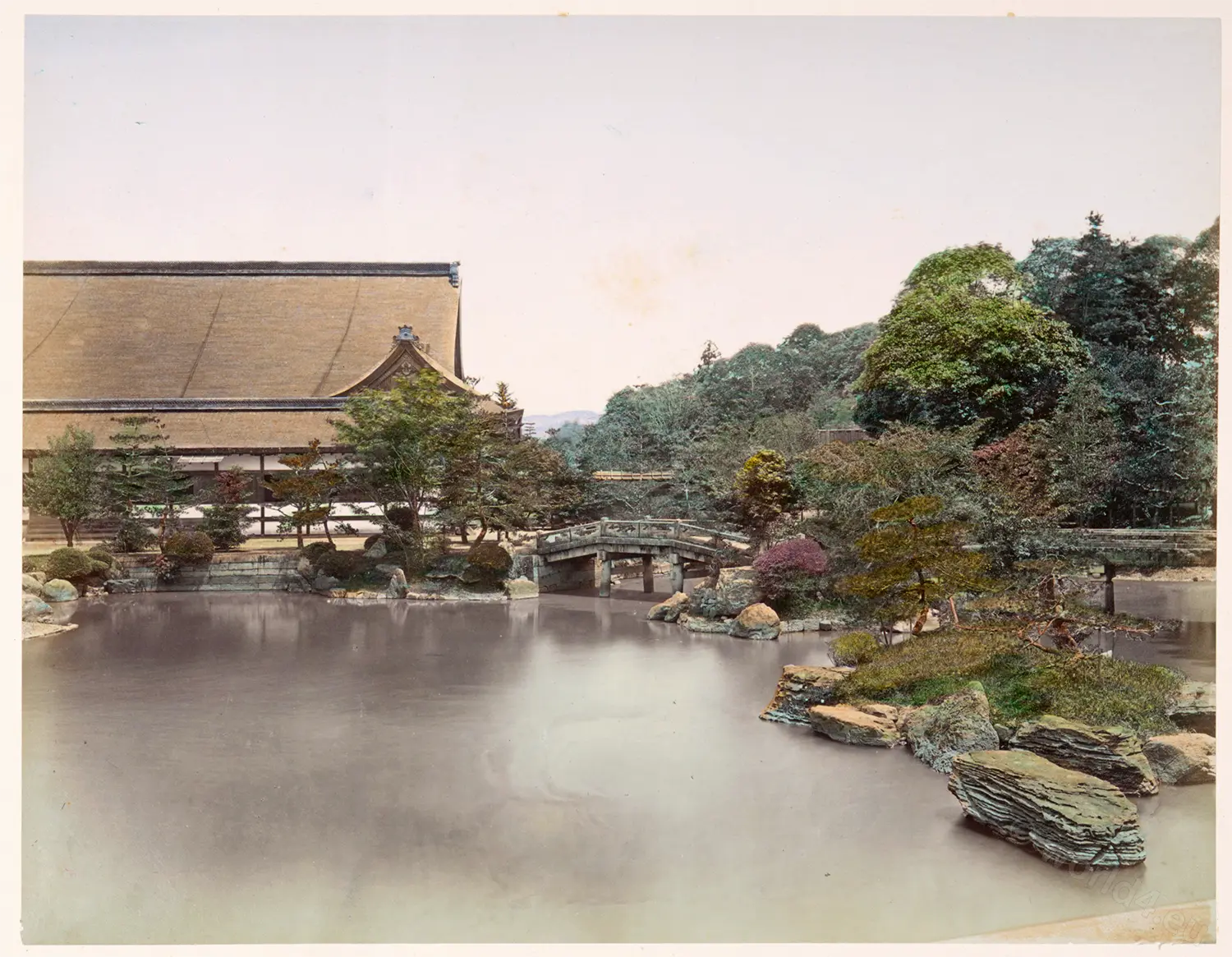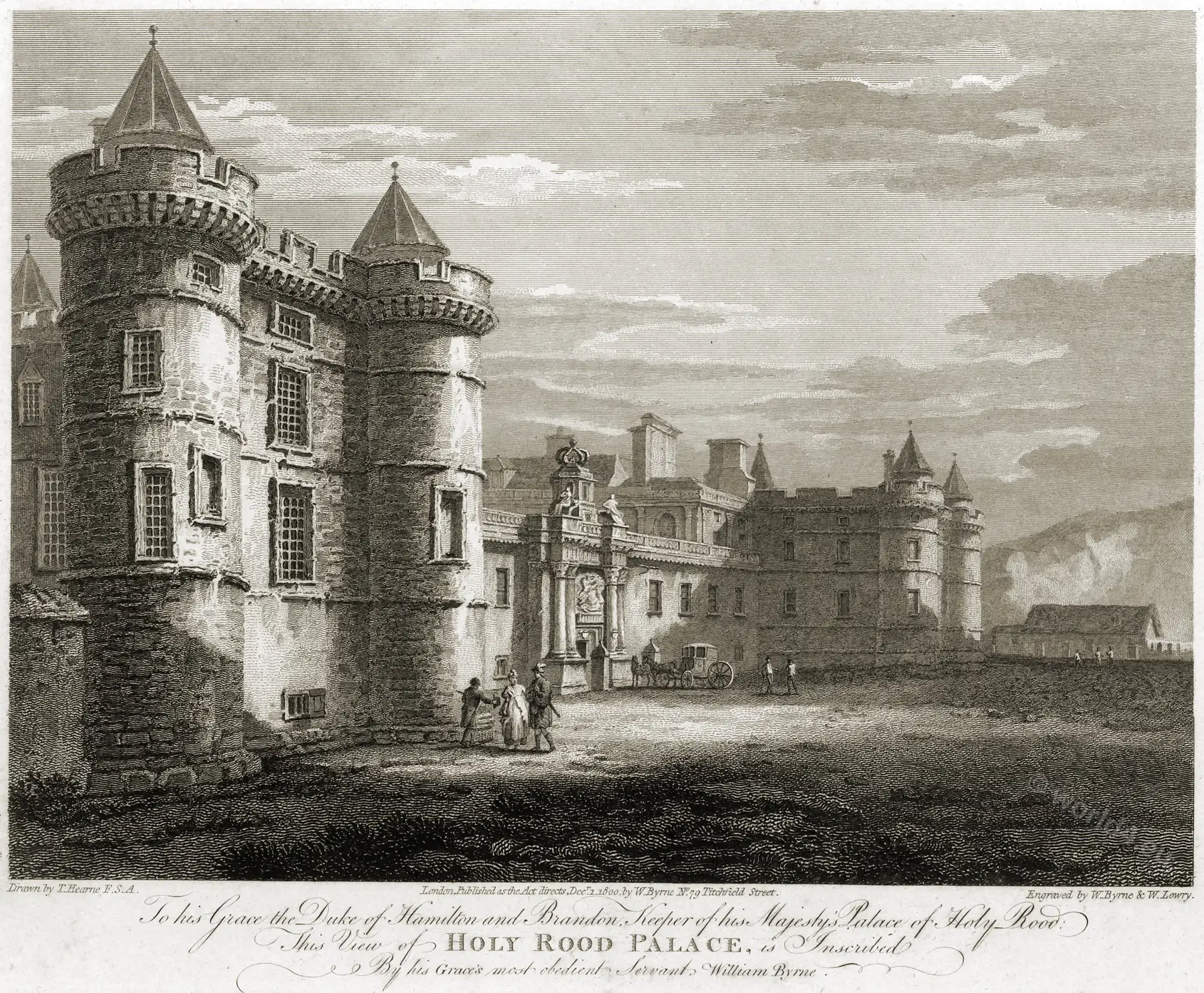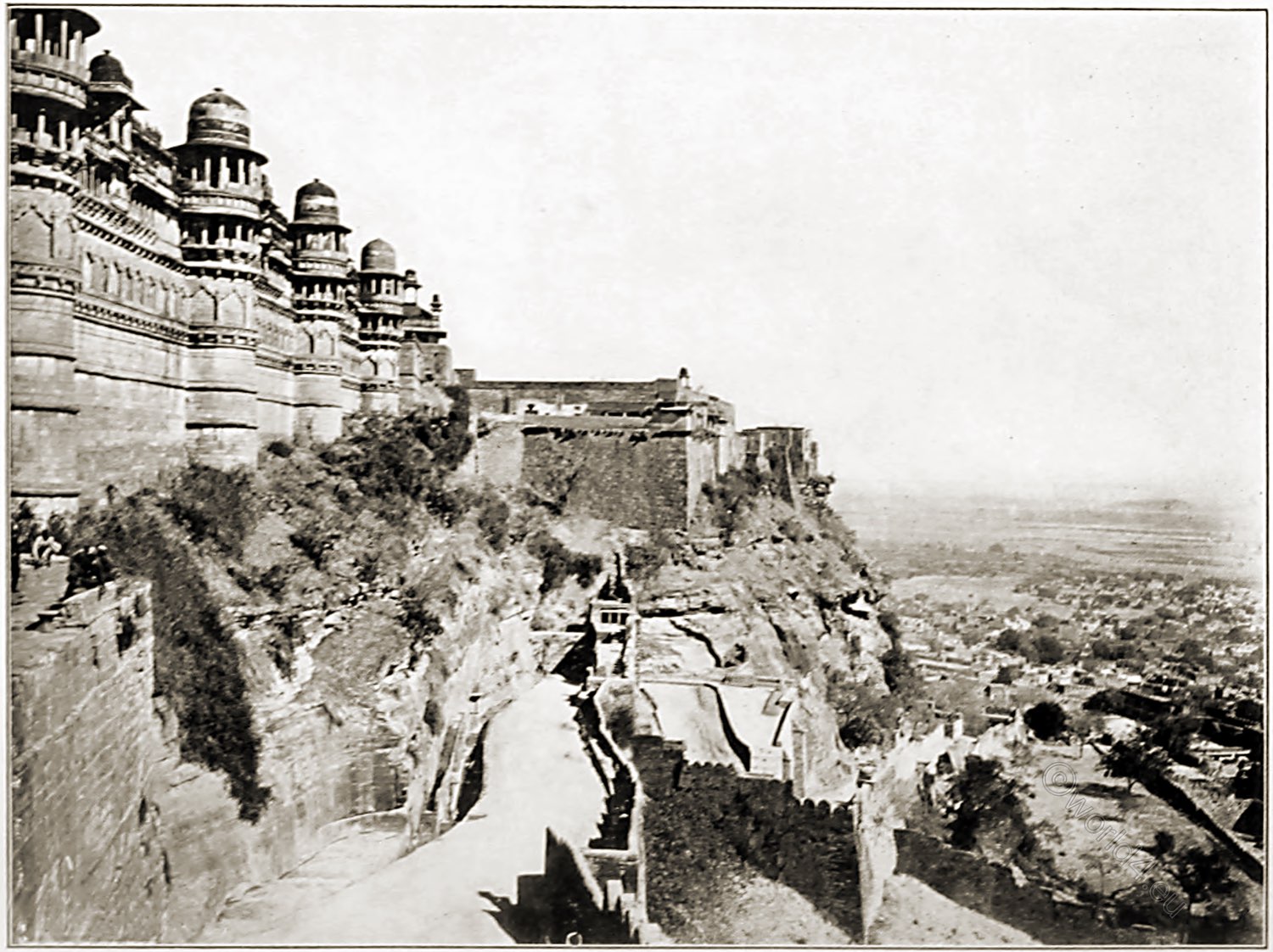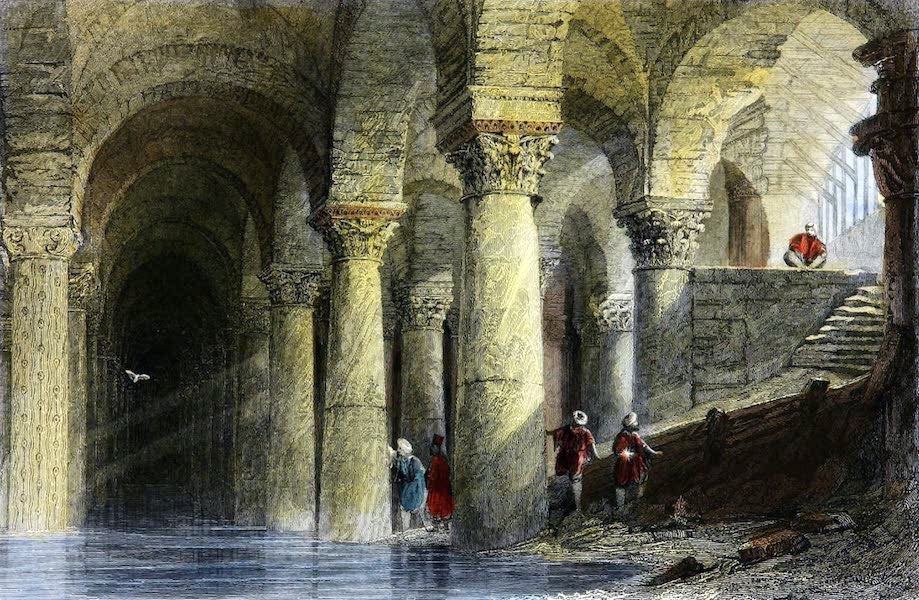
Yerebatan Serail.
Constantinople and its environs.
This appellation literally means “The Subterranean Palace,” and it is given to the only one of the many cisterns with which the city was excavated, now remaining in use for the purpose for which it was erected. Some are filled lip, and converted into gardens; one called Bin bir Derek, which we have before noticed, and given in our illustrations, is a silk factory; but the “Subterranean Palace” still remains a cistern filled with water.
When the Turks took possession of the city, this magnificent work of Grecian art escaped their notice, and remained unexplored and unknown till the time of Gillius, who was in Constantinople in 1550. He appears to be the first who discovered and described this curious subterranean edifice; and so ignorant were the Turks then of its existence, that the houses in the streets above drew water from it, and knew not whence it came. From that time the memory of it was again lost; and travelers, taking Gillius for their guide in exploring the city, searched for this curiosity in vain; and some pronounced that it had no existence, or was confounded with some other. In this state it remained for two centuries more, till Andreossi, the French ambassador, discovered and described it.
Again the mysterious edifice was lost, and Janissaries attending travelers as guides could give them no clue to discover it,-this singular and magnificent excavation appearing and disappearing to human sight, like some enchanted palace in Oriental fiction. Finally, it was searched for by a Frank resident of Pera, and, after two years’ diligent inquiry, was at length discovered by him, under the foundation of a private house, in a remote and obscure street. Part of a wall had fallen ill, and discovered to the astonished proprietor innumerable marble columns, of various orders of architecture, rising out of a vast lake of water, and supporting a lofty arched roof, on which his house stood. From that time, easy access has been afforded to it; every stranger visits it; and there is no probability that the Turks, now so much more enlightened and inquisitive, will again suffer the memory of this noble work of Grecian art to perish among them.
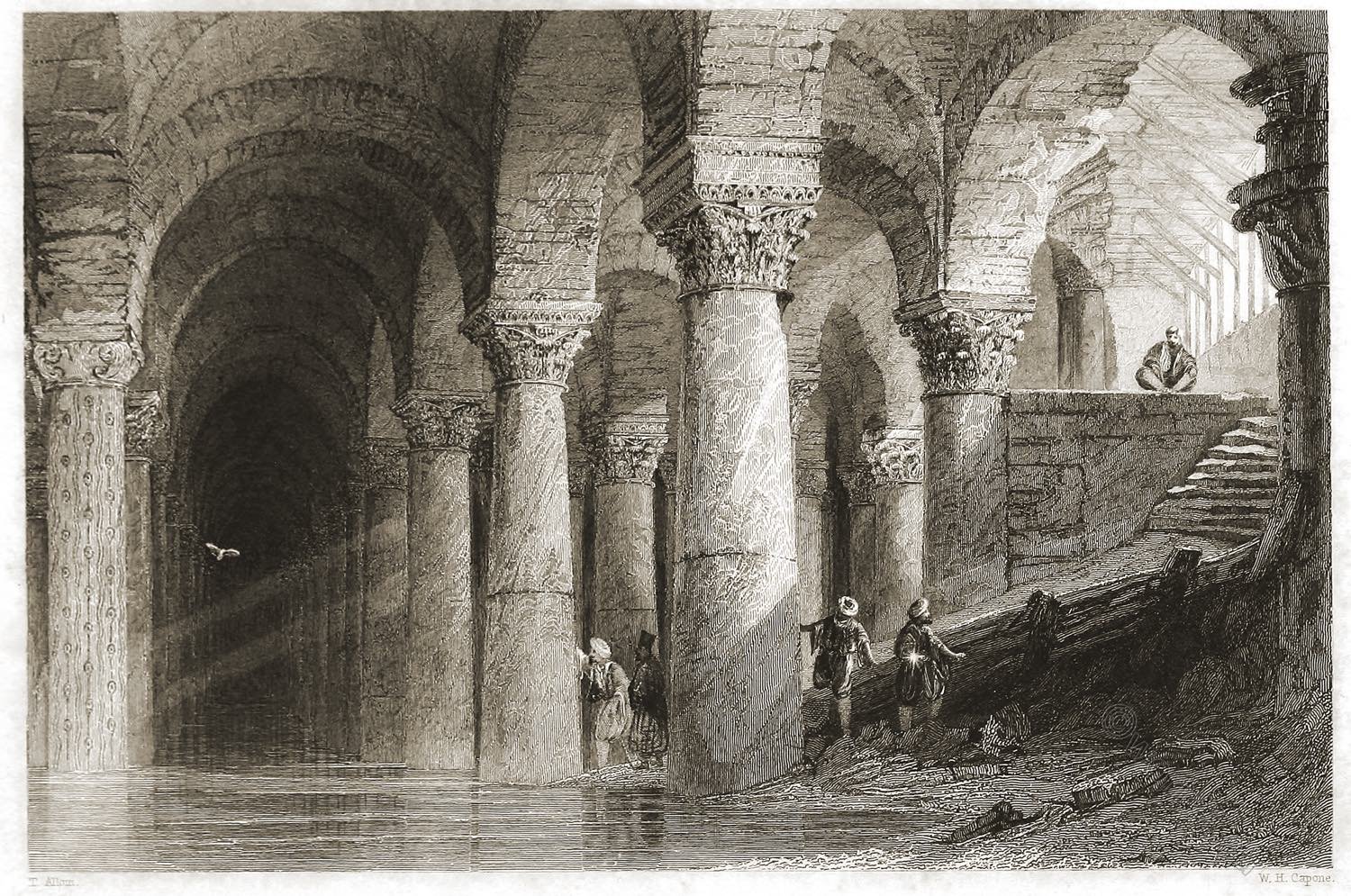
As we have already mentioned this cistern with others, we refer to our former notice. We will merely add, that the actual extent and beauty, though sufficiently great to excite our admiration, are extravagantly exaggerated by the credulous Turks, who now begin to regard it with awe and astonishment. Some places at a considerable distance have fallen into other subterranean cavities, and they are asserted to be parts of this cistern not yet explored. The number of columns is nearly the same as that of the Bin bir Derek, and both excavations are supposed to be of the same extent. But the proprietor of the house, through which is the only known access, tells of fearful perils encountered by intrepid navigators, who attempted to explore this inland sea; of lost adventurers, who never returned to tell them; and, in the still unchanged spirit of a Turk, relates as true all the figments of an Oriental imagination.
Source: Constantinople and the scenery of the seven churches of Asia Minor illustrated. In a Series of drawings from nature by Thomas Allom (1804-1872). With an historical account of Constantinople, and descriptions of the plates by the Rev. Robert Walsh LL.D. (1772-1852). Fisher, Son, & Co, 1839. Newgate St., London; & Quai de L’Ecole, Paris.
Discover more from World4 Costume Culture History
Subscribe to get the latest posts sent to your email.

